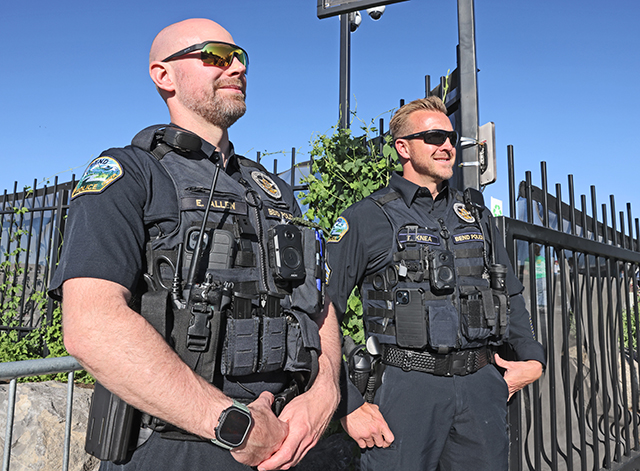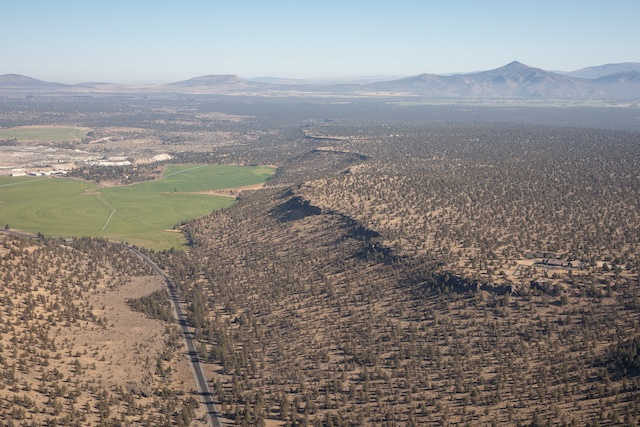The Art of Preservation
Published 4:00 am Sunday, October 31, 2004
Enter Tim McLagan’s place of business and you’re immediately faced with the finished product, a roguish gallery of bristly countenances frozen in mute greeting.
Dozens of head mounts – some considered trophies, others simply representative of a species – line the walls of the foyer/showroom. The ones with tan tags attached belong to clients of McLagan’s Taxidermy, most of whom delivered the animals last fall and should be along any time to pick them up: Johnny’s first buck, a couple of outsized elk with multiple hat-rack potential, a muskox, a burly bison. The others – including a largemouth bass, some big trout, a hammerhead shark, a diamondback rattlesnake and a bobcat stalking a quail – are McLagan’s own.
Behind the counter, there’s a photo of a stuffed tiger in full attack mode preparing to dispatch an axis deer. The little things – the bared fangs and rippling musculature of the tiger and the shrinking posture of the deer at the precise moment of awful recognition – lend realism to a surreal scene, the award-winning work of an artist at the height of his powers.
For all his taxidermic prowess, Tim McLagan seems utterly without affectation. What you see is what you get.
And what you get is a 46-year-old guy who’s a thoughtful student of wildlife, who’s too busy to hunt as much as he’d like, and too enthusiastic about taxidermy to turn clients away. He’s got the heads and the stories to prove it.
The shop beyond the showroom is an entirely different realm. It’s here that McLagan and his colleagues transform (sometimes marginally) field-dressed (and often poorly preserved) animals into individual pieces of wall-hanging wildlife art.
When McLagan was 14, he shot a wood duck and, noting the fowl’s exquisite beauty, sought to have it stuffed for his dad. The taxidermist he and his brother used had 100 birds on display, McLagan recalled.
”I just fell in love with it,” he said. ”I just kept bugging him and bugging him and finally went to work for him.”
He soaked in theory and technique like a dry sponge, and to this day, McLagan revels in turning out highly detailed game-bird mounts (the same doesn’t hold for fish; he contracts those out).
McLagan bought his shop on Highway 97 between Bend and Redmond in 1997 and has no problem staying busy.
”Everybody you deal with is happy,” said McLagan of his chosen vocation. ”They just killed a trophy of a lifetime … I’d like to slow it down, but who do you say no to?”
Not many, judging by the hides and heads in different stages of completion scattered across the room.
McLagan typically receives dozens of deer and elk heads each fall (he also trades leather gloves for hides).
First, he strips the skin and fur off the entire head and neck area, a process called caping the head. McLagan then salts the hides and sends them off to a commercial tannery in San Francisco or Portland. A couple of months later the tanned hides are shipped back to Central Oregon.
”Then we put them all back together,” McLagan explained. ”That’s the fun part.”
Using a precisely measured Styrofoam deer or elk mannequin, he bolts the horns on, fills in the head and face with mache and sets the eyes in clay, paying particular attention to the detail around the nose and eyes. Certain tricks of the trade, such as reproducing the nictitating membrane (a transparent third eyelid) on the inside corner of the eye and fleshing out the animal’s face help give a mount the illusion of life.
McLagan then slips the cape (the head and neck hide) over the mannequin like a tight-fitting woman’s dress glove and sews it up.
It takes a week to 10 days for the head to dry before it’s sent to a back room for detailing. There, McLagan and colleague Desiree Streeter have a hundred and one tricks up their sleeves to shape and paint noses, fill in lips and enhance the lifelike appearance.
”What keeps me in (this) is the look on the guys’ faces when they come in and pick it up,” said McLagan. ”It’s the memory of the hunt.”
And just about every client who comes in ends up recounting the story of his particular experience, from the stalk to the coup de grace.
”We don’t talk politics here,” said McLagan. ”We talk hunting.”
For much of the year, McLagan lives vicariously through his clients. He’s too busy to participate in Oregon’s big game seasons, so he tries to get to Texas each year to hunt whitetail deer and other species.
But it’s not all deer and elk for McLagan and company. Different items come around to challenge his abilities and artistic sensibility. Any day now, he’s expecting an alligator from Florida. McLagan, who’s involved in the local chapter of the Safari Club International, mounts the gamut of African species as well, from bontebok to warthog.
He’s stuffed and mounted family pets, a friendly old bull and other livestock.
But McLagan’s most bizarre request was one he couldn’t fulfill.
One day a man came into his shop with his arm in a sling. It was to be amputated.
The guy said, ”I’ve had this (arm) for 60 years,’” McLagan recalls. ”I want to keep it.’”
He wanted McLagan to stuff the limb hefting a beer stein and mount it on a tasteful plaque.
McLagan declined, citing legal concerns.
His price list doesn’t include human appendages, but McLagan has considered just about every other possibility. A life-size pronghhorn, for instance, costs $1,800, while a moose runs $4,500 (a mounted moose head comes in at $950). He’ll turn a grizzly into a rug for $155 a linear foot, and shoulder mount a jackal for $350. A coyote runs $300. There are more than 90 choices on the McLagan’s menu.
McLagan provides the Oregon Department of Fish and Wildlife with real-looking deer decoys to help in the battle against poaching. He also hosts student field trips and offers a discount for a youngster’s first buck.
There’s a healthy market for taxidermists in Central Oregon. Last year, McLagan took in 600 animals to mount. Thumb through the yellow pages and you’ll find more than a half dozen other taxidermy shops serving the region.
But George Coyle, longtime owner of Sportsman’s Taxidermy in Bend, said only a few are full-timers.
”It takes a long time to develop a business,” Coyle said.
Like McLagan, Coyle enjoys the challenge and the people.
”You get to hear a lot of different stories,” he said. ”And I’ve heard about everything.”
Said McLagan: ”I’m fortunate to be an artist and to be able to make a living at it.”
Jim Witty can be reached at 541-617-7828 or jwitty@bendbulletin.com.






